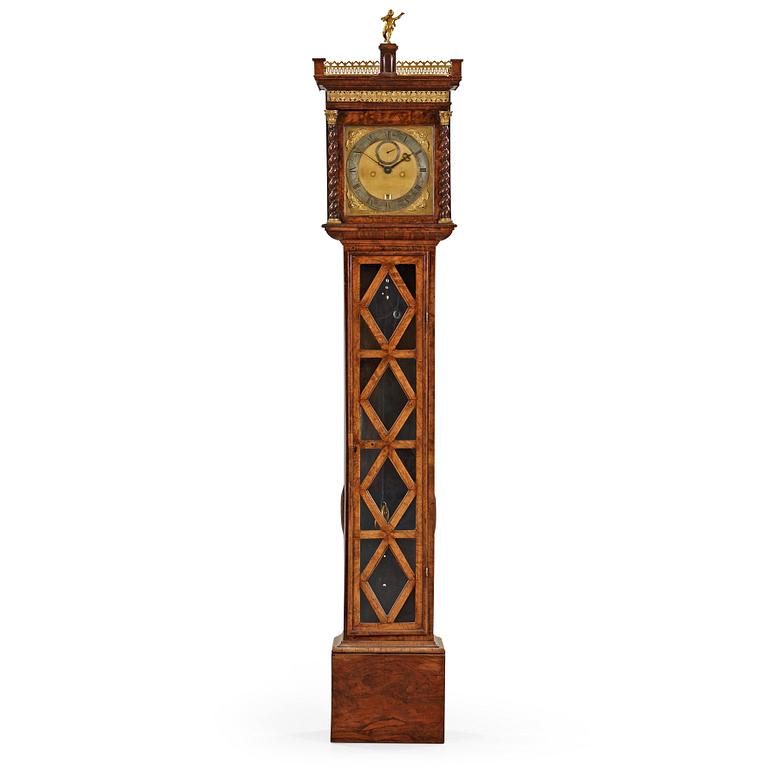GOLVUR, av Eduardus East (1602-1696), London, 1600-talets andra hälft.
Fanerad med valnöt. Förgyllda dekordetaljer av brons. Urtavla märkt "Eduardus East Londini". Med visare för timmar, minuter och sekunder samt datum. Urtavla 25x25 cm. Höjd 189 cm. Pendel, två mässingsskodda lod samt en vev medföljer. Löst lås samt dekordelar medföljer.
Omarbetat, kompletterat, skador, delar saknas. Senare bas medföljer.
Övrig information
Eduardus East (1602-1696) is regarded as one of the greatest and most influential clock and watch makers to have existed. he is called "The Father of the English Clockmaking". He began his apprenticeship in 1618, and was made free in the Goldsmiths Company in 1627. In 1632 when the Clockmakers Company was granted its Charter, East was the youngest Assistant to the Court, a reflection of the esteem in which he must have been held. He rose within the Company and was Master twice, either side of the Civil War, in 1645 and again in 1653. He held meetings at his premises in Fleet Street, at the 'Musical Clock'. In 1660 he was appointed Chief Clockmaker to King Charles II. East was well known to the King as when East had lived in Pall Mall, near the tennis court, the King would often ask him to attend tennis matches and offer one of his watches as a prize. On its introduction to England in 1657, East quickly adopted the pendulum and ran one of the most important workshops in the early years of the pendulum clock. During his long working life, he took on eight apprentices: Thomas Wolverstone, Robert Hanslapp, Walter Gibbs, Edward Wagstaff, Henry Jones, John East, Adam Pearce and Richard Bellinger.


















































































